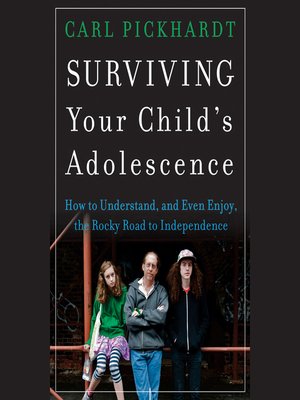Surviving Your Child's Adolescence
audiobook (Unabridged) ∣ How to Understand, and Even Enjoy, the Rocky Road to Independence
By Carl Pickhardt

Sign up to save your library
With an OverDrive account, you can save your favorite libraries for at-a-glance information about availability. Find out more about OverDrive accounts.
Find this title in Libby, the library reading app by OverDrive.



Search for a digital library with this title
Title found at these libraries:
| Library Name | Distance |
|---|---|
| Loading... |
Pesents a dynamic 4-stage model of adolescent growth that helps parents predict many of the common developmental changes that will unfold. Early Adolescence (ages 9 13.) The function of the first adolescent stage is to accomplish the separation from childhood. The parenting challenge during this stage is to absorb the childs negative response to giving up the comforts of childish ways and to enduring parental restriction of personal freedom, without taking these injured feelings personally or reacting negatively in return. Mid Adolescence (ages 13 15.) The function of the second stage of adolescence is to establish an independent family of peers. The parenting challenge during this stage is to provide loyal opposition to the young persons push for more social freedom with friends when it appears unwise or unsafe, without resorting to coercion or censure to settle disagreements. Late Adolescence (ages 15 18.) The function of the third stage of adolescence is to experiment with acting older to get ready to operate more grown up. The parenting challenge during this stage is to allow more grown-up freedoms while imparting the necessary knowledge and insisting on the commensurate responsibility needed for successfully mastering the next level of independence soon to come. Trial Independence (ages 18 23.) The function of the fourth and last stage of adolescence is to practice taking care of oneself on ones own. The parenting challenge during this stage is to communicate full faith in the young persons capacity to assume more independence, to let go and still be there to provide helpful advice and problem solving when asked, without rescuing or criticizing when the young person makes a serious mistake. It also differentiates parenting challenges between mothering and fathering adolescent sons and daughters.







